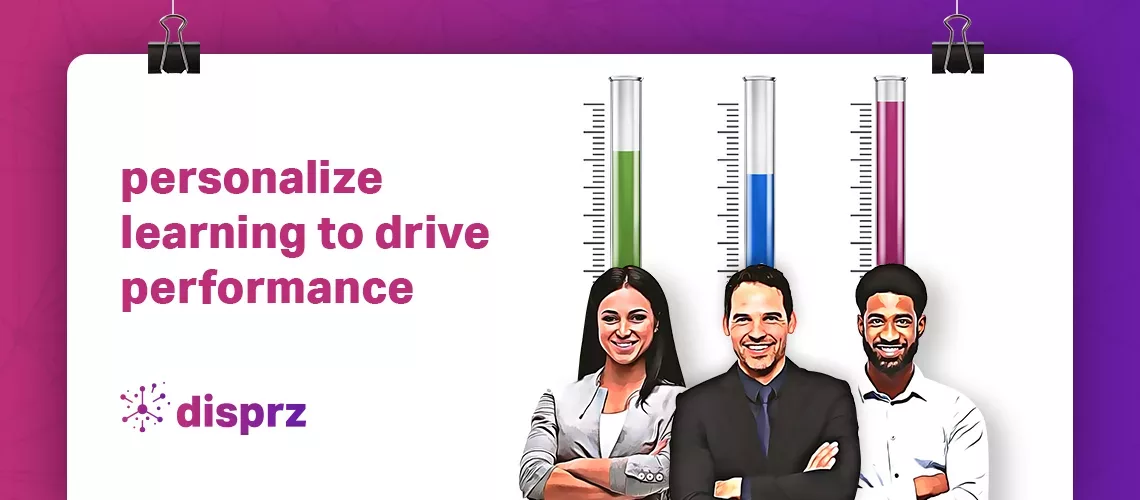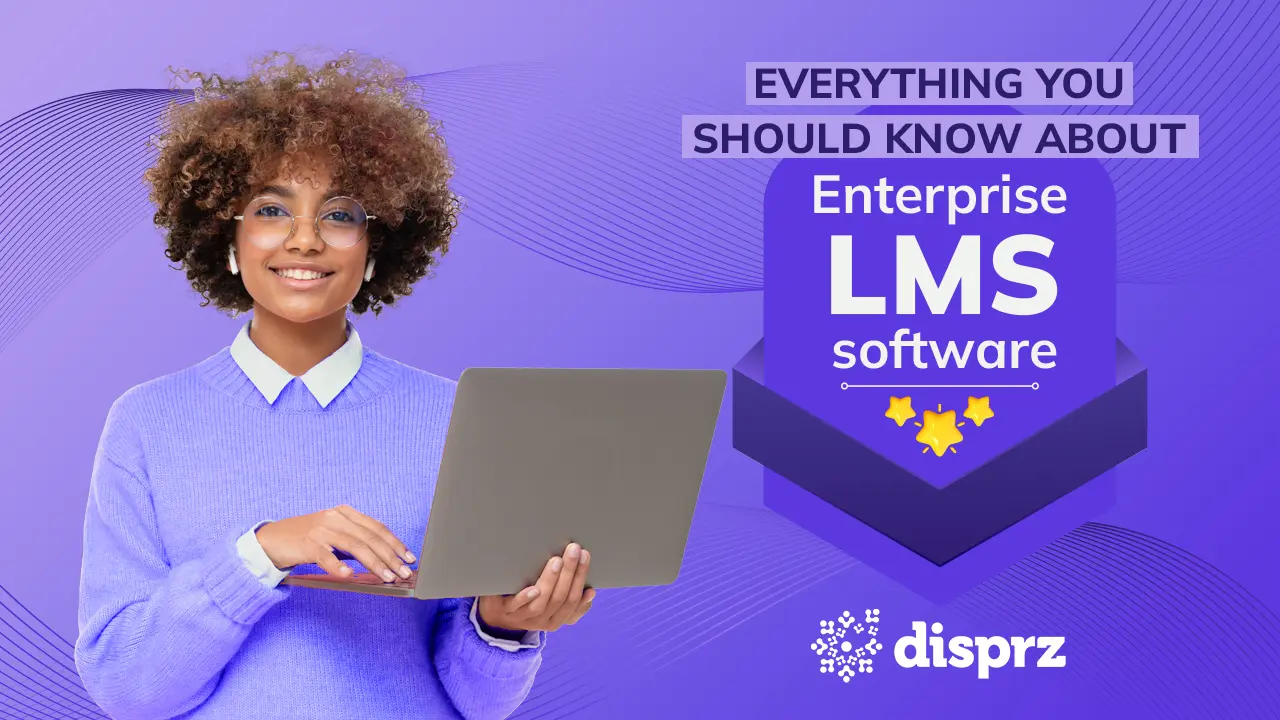
6 min read
• 18 Apr 2024
Same team different skill gaps – how to address unique learning needs
Employees in a team need courses as per their proficiency level. Addressing unique learning needs can help enhance employee skillsets to improve performance.
-
eBookEmployee Upskilling - A Detailed Blueprint For Building A Skills-Driven Learning Culture
Whether Automobile, Logistics, IT, Retail, e-Commerce or FMCG, skill shortage is a pressing issue in almost every industry. Therefore, companies, whether big or small, focus on upskilling and addressing the unique learning needs to bridge the skill gaps of employees.

Upskilling and reskilling is crucial to expand employee capabilities and achieve better business outcomes. However, generic upskilling and reskilling programs often repel employees. Each employee has different skill gaps. The shoe that fits one pinches the other; a one size fits all approach to learning and development often leads to unsatisfactory results. Therefore companies must consider offering differentiation in L&D for addressing unique learning needs.
Why does differentiated learning matter?
Let’s answer this question with an example of two sales reps who are in the same team. One team member is very good at setting up sales appointments with potential prospects and giving sales presentations but faces challenges in closing the deal. The other sales rep is not able to convince a prospect to meet him for a sales presentation. Despite being in the same team, both are facing different challenges. One is getting stuck at the appointment stage, and the second is getting stuck at the closing stage of the sales process, so they require different learning programs to address their individual challenges.
Differentiated learning boosts engagement as employees show interest in the courses tailored to their challenges. When the employees find the learning programs well planned, meaningful and relevant, they take ownership of their skill development and put in sincere efforts to improve their skillset.
93% of employees said that well-planned employee training programs positively affect their level of engagement.
How to address unique learning needs?
Like all the fingers aren’t similar, every employee’s learning needs differ. So, experiment with the L&D strategies, content and formats. Employees in one team can be at different skilling points, so give them the freedom to explore the skills and courses as per their proficiency level. Addressing unique learning needs can help enhance each employee’s skills to improve performance for reaching the company’s goals.
Below are a few ways to address these unique learning needs.
Skills are changing at lightning pace: Identify trending skills for each role
Each role in an organization needs a few key skills to carry out certain responsibilities efficiently. So before delving deep into unique learning needs, it is essential to identify and map skills for each role in your organization. A skills catalogue will make planning a learning journey for various roles easier. So, discover the trending skills and benchmark them against each role.
Once you have your catalogue of skills, you can analyze the skills gaps of each individual. Skill gap analysis is an effective way to identify the areas where help is needed. It provides insights into each employee’s improvement areas to create relevant and impactful learning pathways.
Prevention is better than cure- understand different learning preferences
It is good to spot the problems early before it affects the team and the company’s goals. One-to-one meetings are a great way to shed light on the problem areas and find out employees’ aspirations. It helps understand every employee individually to build a good rapport. One to one meeting gives you an opportunity to create a roadmap of learning for leading the employee in the right direction.
During the one-to-meeting with each employee:
- Provide feedback based on the data collected by skill gap analysis
- Highlight the gap between the business expectation and performance of the employee
- Understand the unique competency and show the direction for development
- Help the employee visualize the benefits of enrolling and completing L&D courses
- Understand what the employee wants to learn and which skill s/he wants to develop
- Find out what content format do they prefer
- Understand what changes would they like to see in the current learning programs
The one-to-one meeting gives a wealth of information that can be used to plan effective learning and development sessions for each employee. You need to ensure that the conversation is headed towards employee growth, aspirations, development plans and learning opportunities.
Provide the “Just for me” learning experience – Personalize L&D
Once you understand each employee’s skill and learning requirement, the next step would be to create a learning journey. Consider focusing on personalization while creating learning pathways for each employee. Personalization helps in making learning engaging and learner-centric.
The learning courses can be designed around the skills defined for each employee. Including examples and use-cases can help the employee in getting a better understanding of each subject. Using a modern tool like LXP, you can give your employees a Netflix-like experience. Instead of movies, they will get learning recommendations based on their job roles, interest and past learning behavior. The personalized learning approach entwined with AI helps capture the employees’ attention.
Studies show that 77% of learning and development professionals believe that personalized learning is critical to employee engagement.
Your learning strategy has a shelf life – Monitor and renew continuously
Keep monitoring the effectiveness of your learning programs. With the help of an analytics builder, keep track of the learning insights and completion rate of your L&D program. Find out if the employees are enrolling and completing your courses or abandoning them midway. Based on the insights, take real-time action.
Some learning strategies might work today, but with the changing skills, they might become obsolete in the future. So, rethink and update your learning strategies regularly.
Conclusion
Addressing unique learning needs can help get the best out of each employee. So instead of casting the net wide and creating generic learning material, focus on individual learning. A skilling suheaite like disprz can help you in personalizing learning for each employee. With disprz LXP, you can give your employees the flexibility to explore skills that interest them while driving learning initiatives that seamlessly blend with your employee’s workflow.
Disprz LXP provides the perfect platform that empowers you to make available a host of digital content, in-house content, and micro-gigs to make skilling all the more holistic. Through periodic skill gap assessments and feedback, managers can assess current skill levels and guide the employees on the right path. Features that surge adoption like leaderboard, social learning, nuggets that support multi-lingual learning makes disprz LXP more than just a learning app – a collaboration, engagement, and business-led skilling tool.

About the author

Debashree Patnaik
Debashree is a seasoned content strategist at Disprz.ai, specializing in enterprise learning and skilling. With diverse experience in B2B and B2C sectors, including ed tech, she leads the creation of our Purple papers, driving thought leadership. Her focus on generative AI, skilling, and learning reflects her commitment to innovation. With over 6 years of content management expertise, Debashree holds a degree in Aeronautical Engineering and seamlessly combines technical knowledge with compelling storytelling to inspire change and drive engagement.
More Resources
4 min read
• 15 Apr 2024
Unlocking the Power of Managerial Engagement in Talent Development
4 min read
• 09 Apr 2024
Nurturing Excellence in Building Leadership Pipelines
Sign up to get free resources and stay up to date with Disprz!
Discover how Disprz can align learning and upskilling with your desired business outcomes.





